中国组织工程研究 ›› 2017, Vol. 21 ›› Issue (30): 4763-4768.doi: 10.3969/j.issn.2095-4344.2017.30.002
• 组织工程骨及软骨材料 tissue-engineered bone and cartilage materials • 上一篇 下一篇
椎体成形治疗中骨水泥渗漏的因素与临床分析
陈家麟1,陈 晞1,杨 军1,王 俊1,耿天勇1,安成玲2,胡婷业2
- 滁州市第一人民医院,1骨科,2介入科,安徽省滁州市 239000
Cement leakage factors in clinical vertebroplasty
Chen Jia-lin1, Chen Xi1, Yang Jun1, Wang Jun1, Geng Tian-yong1, An Cheng-ling2, Hu Ting-ye2
- 1Department of Orthopedics, 2Department of Intervention, the First People's Hospital of Chuzhou, Chuzhou 239000, Anhui Province, China
摘要:
文章快速阅读:
.jpg)
文题释义:
黏滞性流体:骨水泥是具有一定流动性的黏滞性流体,随时间变化而具有不同黏滞度。流体的物理特征就是具有流动性,力学上表现为它们在静止时不能承受切向应力,流体变形所需的阻力非常小。当流体形状改变时,流体各层之间还存在一定的运动阻力称为流体的黏滞性。
骨水泥“玻璃珠效应”:即骨水泥只有支撑骨折椎体作用而无固化骨折椎体作用,由于硬化的骨水泥弹性模量远高于骨质疏松骨折椎体,此“玻璃珠”长期效应对于骨质疏松骨折椎体来说是有害的,它因无固化骨折椎体作用,而不能稳定椎体,故不能促进骨质疏松骨折椎体的愈合,甚至可导致新的骨折,使临床止痛疗效降低或复发。
背景:椎体成形术及椎体后凸成形术是治疗老年骨质疏松性椎体压缩性骨折的重要方法。由于骨水泥自身具有一定流动性以及椎体骨折情况不同,治疗过程中骨水泥渗漏率依然较高。
目的:通过理论探讨和临床分析,研究骨水泥渗漏相关原理以及有效预防方法。
方法:根据术者习惯,将162例骨质疏松性椎体压缩骨折患者(186个椎体)分为3组。A组:64例78个椎体用普通推杆骨水泥成形术工具套件进行椎体成形术;B组:57例65个椎体用带骨水泥泵手柄连杆骨水泥成形术工具套件行椎体成形术;C组:41例43个椎体用带球囊扩张椎体后凸成形术工具套件行椎体后凸成形术。观察3组骨水泥渗漏情况。
结果与结论:①术后出现骨水泥渗漏25个椎体,发生率为13%(25/186);②A组骨水泥渗漏11个椎体,渗漏率为14%(11/78),B组骨水泥渗漏8个椎体,渗漏率为12%(8/65),C组骨水泥渗漏6个椎体,渗漏率为14%(6/43)。3组骨水泥渗漏率统计学比较差异无显著性意义(P > 0.05);③骨水泥渗漏原因具有不完全可控性,渗漏位置也有一定随机性。严密谨慎的影像学监测是预防骨水泥渗漏的直观方法。
中图分类号:
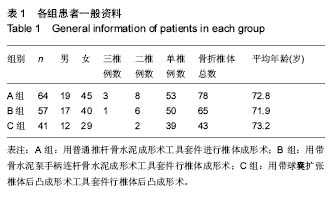

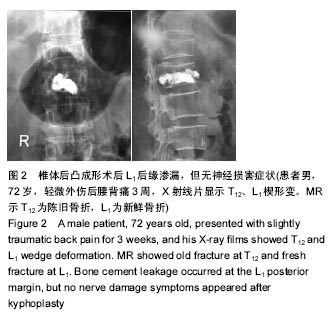
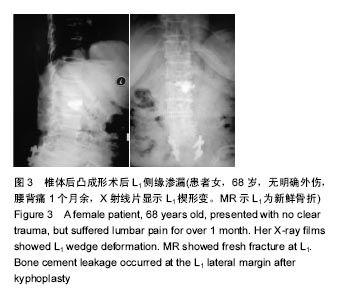
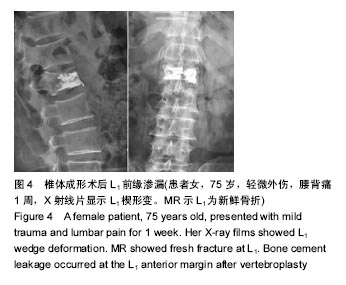
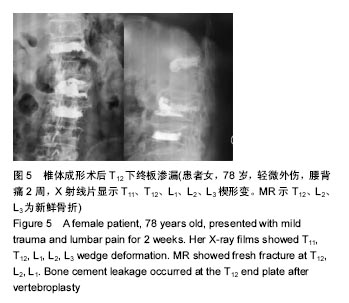
.jpg)